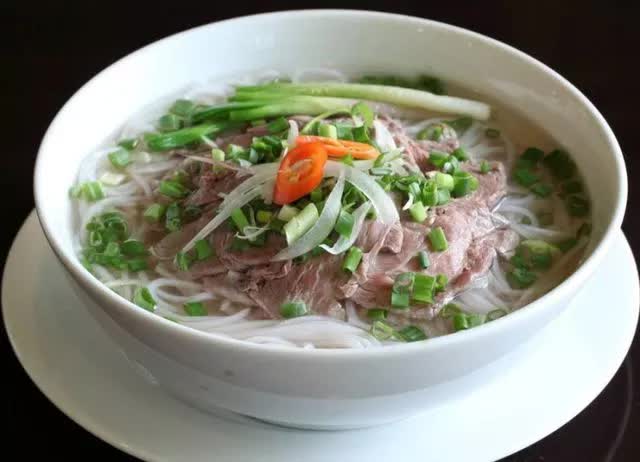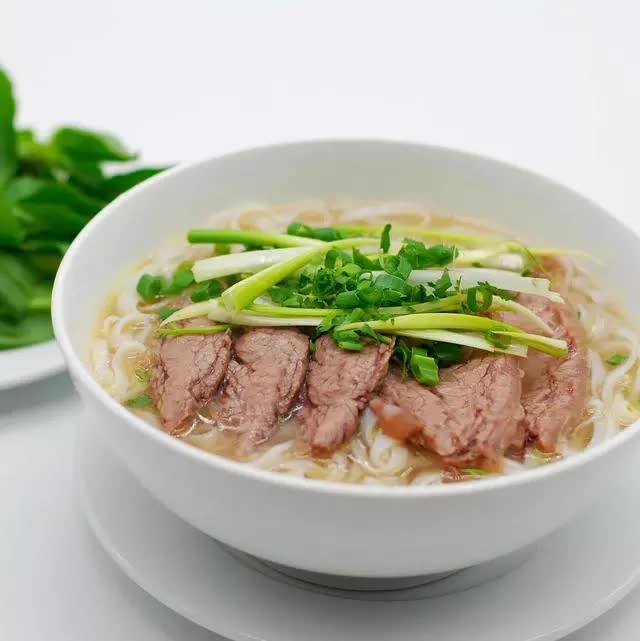Compass Travel Vietnam
The origin of pho: From the largest textile factory in Indochina to Hanoi-style dishes
The origin of pho: From the largest textile factory in Indochina to Hanoi-style dishes
How was beef noodle soup born?
Although no one knows exactly how pho was born, there are many theories that people in the villages in Nam Dinh invented this dish in 1898 when the French colonialists started building the factory. Nam Dinh textile.
French technicians and thousands of workers flocked to this area to work for the largest textile factory in Indochina at that time. Some people who are knowledgeable about food have found ways to combine and improve the “xo” soup, cook it with white pho, green onions, herbs and adjust the seasoning to suit the taste of the diners.
“The French like beef, so the villagers modified it by adding beef to the crab rice cake (a dish made from river crabs served with a kind of white noodle soup, similar to pho)”, Vu Ngoc Vuong, The owner of an award-winning pho restaurant with a chain of 5 pho restaurants in Hanoi, reveals stories passed down from generations ago in Co village.

“In addition, the French who came to build a textile factory gave people beef bones to bring back to simmer to make broth. According to the ancestors, that’s how pho was created.”
When construction workers moved from Nam Dinh to Hanoi to work on the Long Bien bridge project, pho quickly spread beyond the village. Carrying the burden of pho on their shoulders, the poor people followed in the footsteps of construction workers, quickly earning a good income from selling pho, and also making this dish soon become a favorite of the people of the capital.
Mr. Vuong said: “The first person of the Co family to bring pho to Hanoi was Mr. Co Huu Van. If he were still alive, he would be over 140 years old. At that time, he went to Hanoi to rent a house. The village youths came to the capital. dollars to cook pho; during the day, carry the stalls around Hanoi, and at night go home to sleep”.
The crossroads of beef noodle soup
Co Huu Van’s descendants eventually opened pho shops in Hanoi’s Old Quarter, and some of them, now taken over by the 3rd generation, are the city’s most highly regarded pho shops. , such as Pho Gia Truyen Bat Dan and Pho Bo Viet Hoa Cu Chieu. Mr. Vuong said: “90% of my villagers moved to Hanoi to live and do pho business, only 10% stayed in Nam Dinh”.
From here, pho developed in very different directions. For “Nam Dinh version pho”, slices of beef are sautéed with garlic and a few pieces of tomato, then placed on top of blanched noodles before the chef pours a ladle of fragrant broth into the bowl.
Meanwhile, Hanoians have a minimalist approach to the dish. In Hanoi, pho is largely dependent on the quality of the broth, giving the impression that even herbs can take away the flavor of pho. According to artisan Bui Thi Suong, ambassador of Vietnamese culinary culture, beef noodle soup in Hanoi is only made from bone and beef; and the chicken noodle soup is only chicken. If you go to the cities in the south, diners will not see that special. For example, Hue beef noodle soup in central Vietnam, uses both beef and pork along with more complex seasonings.
“The use of a meat for the broth is very similar to French cooking, which makes the flavor more subtle,” says Suong. Nowadays, many people think that the most “authentic” pho is from Hanoi.

Vuong believes that broth is the clearest measure of a good bowl of pho. A good broth, he explains, should have a sweet, rich taste from the bones of the tubercle simmering for hours, but it needs to be clear, light brown, and subtly seasoned. He said: “The spices used in pho should be gentle layers of flavor rather than complex layers. When diners taste it, they won’t find any spice that is superior to the others.”
Although beef noodle soup was a favorite in Hanoi until the mid-20th century, the dish continued to evolve. In 1939, people had to limit the slaughter and consumption of beef. The people of Hanoi then reinvented pho so that this dish would flourish again. Chicken noodle soup was born and quickly embraced by the people of the capital, and today, along with beef pho, it remains a beloved version in Vietnam and beyond.
One Hanoi resident said she likes to eat “a great bowl of chicken noodle soup” for breakfast. “The chicken broth is very skillfully made, it tastes like a tonic, it feels like enjoying a wonderful elixir.”
The origin of pho: From the largest textile factory in Indochina to Hanoi-style dishes
vinlove.
Source: vinlove









